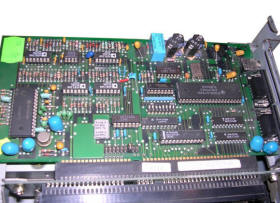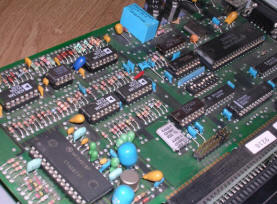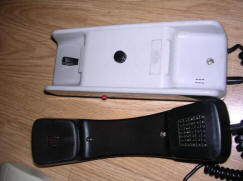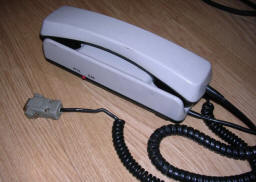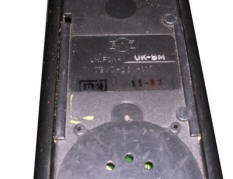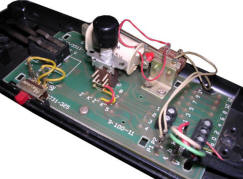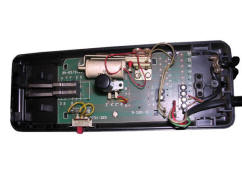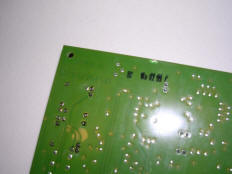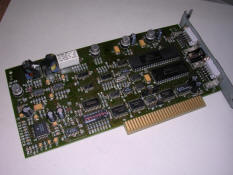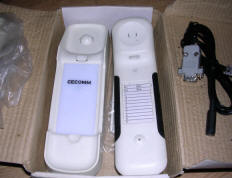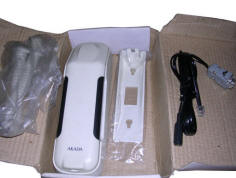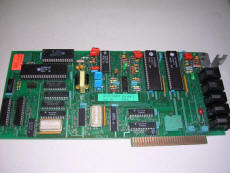"Dyspozytor" system
This system has been developed by now defunct company CECOMM in Bydgoszcz, Poland, for some hospitals, firefighting departaments and other offices in early 1990s. The system as far as I know is now not used at all, so I can describe my parts without worrying about secrets ;). As far as I have sources it was used in 2 hospitals in Poland, some army offices and at least 1 computer company.
The system consisted of personal computers with special ISA cards in
them. Computers used these cards to connect to network, by telephone
line, special cable or with proper adapter even power installation. It was
possible to send short messages or calls using a DOS-based
software. I don't have the software, but reading from CRT burn marks
it can be seen that the software allowed to make calls to other
stations, prepare, send and receive "teletypes" or program
later calls as well as it displayed some table data - maybe phone book
or maybe who is currently "in queue" or "on the line"?.
There was also a special card to connect network to typical, normal
telephone lines by means of ISDN. Then ISDN telephones could be used to
call in and out and the network could be extended.
Because all voice processing took place in card, which is based on 74xx
chips and LSI circuits like 8255, the sampling, if there was any (and
there probably was) had to be really poor, but enough for telephone
communication.
Typical end-user card consisted of 3 connectors:
- Loudspeaker connector (Jack 3.5mm)
- Handset connector (DB9)
- Line connector, using adapter (DB9)
I have 3 ISA cards, two handsets and ISDN card. I'll describe them.
Mark 1 card (1992-1993?)
This is probably the first attempt, board PCB has been made by Toral,
well known PCB factory which, after 1989, started to fall apart (as most
Polish electronics companies). Some components used are quite old, some
are made in Poland. These components, especially capacitors, are quite
large and the board is a full-sized 8-bit ISA card. Line is switched by
transistors, whoch makes the card a bit electrically fragile. There is a
full name "Dyspozytorka" on the card, meaning "dispatcher", like phone
exchange dispatcher. Quality of PCB is quite low, there seems to be no
soldermask, but there are remains of flux - the card has not been washed
after soldering.
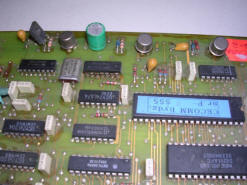
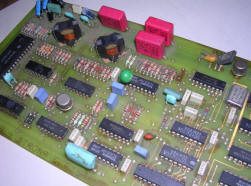
Notice old green capacitor and transistors in metal cans. This card has
been manufactured ca. 1993.
High resolution scans of component side, solder side.
Mark 2 card (1995-1996?)
This card has description "DYSP5/96", and first units are from 1995. It is much better design than Mark 1. The circuit is similar, but now the line is switched by a relay so it is more immune to phone line surges. More components are western, so the card is smaller. Most of 74 logic has been replaced by a GAL circuit. And this card is 16-bit ISA, so it can work with other cards occupying 8-bit slot address space. It has some unknown jumpers (probably address selection) and DIP switches (probably selecting internal configuration). The board has 4 layers, with 2 power fill layers to shield fragile signals from interferences.
High resolution scans of component side, solder side.
Handset used with Mark 1 and Mark 2 cards
It was not a dedicated handset, but a home door phone made by Telephone factory in Radom - exactly Unifon UK-BM, commonly seen in houses even 10-15 years ago. It was modified by adding a cable with DB9 plug. The unit you can see has been manufactured in 1993. In my unit there is a modification which keeps microphone constantly open (in original door phones mic was shut by placing phone on the hook). It is turned off only when the unit is turned off by a switch located on the side. Maybe it was intentional to do "loudspeaker mode" with PC speaker, or maybe someone just wanted to "have an ear" in his room when absent?
Mark 3 card (1998?)
Well, this is something totally different, This multi layered board,
made probably late 1990s, is an 8-bit ISA card, but made with most chips
in SMD. Chips are probably newer, abd the board has a soldermash and
silk screen with parts numbers. Components are entirely western, and
because they are SMD the card is smaller. Resistors and diodes are in
the most difficult to solder cylindrical packages, and only the biggest
chips, connectors, coils and relay are in through-hole packages.
The board has been probably made to order in Siemens factory because
ther is a "Siemens AG" mark on the solder side.
High resolution scans of component side, solder side.
This card used another handset, which was again a modified door telephone, this time made in China.
ISDN card
This card is 1n 8-bit ISA board made with technology from Mk. 2 cards. It consists of 2 digital telephone circuits and all needed circuitry to support few phone lines. The description written in PCB is "IDSN/3". The card has 3 4-pin RJ connectors and 2 8-pin ones, probably to connect the computer to internal network.
High resolution scans of component side, solder side.





